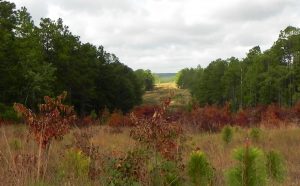Let’s start with a modern fable about three tribes, each with their own totem spirit, but all dedicated to Conservation.
The Native Planters were intent on weeding out invasive species and replacing them with only what grew in pre-modern times. They were hard workers with thick callouses who worked tirelessly.
The Moose tribe sought to restore herds to their original range, as the Creator surely intended. To their great delight, they found they could successfully introduce starter herds anywhere there is sufficient habitat, and that there is much public support for this iconic animal.
Now this is where the Native Planters and the Moose tribe came into conflict. Deep in the box canyons where the Native Planters had labored so long, the new herds followed the creeks and destroyed native vegetation.
Years of work torn up and trampled, said the Native Planters.
No, it cannot be so, claimed the Moose people. Moose and native plants always existed side by side until the Europeans came and changed everything. Surely what we are doing for the moose cannot be at odds with what you are doing for the plants. That doesn’t make sense.
Do you remember there were three tribes?
Quietly, the Wolf People ignored the two squabbling tribes and brought in grey wolves, a pair here, a pack there. And with that, the problem went away. Why? Moose herds don’t go in box canyons when there are wolf packs present.
The moral of this story is that it takes all of the tribes to make a successful Conservation plan.
Or, you could say, you need all the pieces to assemble a puzzle.
That story, which was told to me a long time ago, is a good illustration to keep in mind when you hear about the NFGT, National Forests and Grasslands in Texas. The US Forest Service will be holding meetings soon on their Forest Plan Revision.

According to the USFS, the existing Forest Plan was written in 1996 and does not well represent best practices as currently understood.
For instance, everyone grew up listening to Smokey the Bear say Only YOU can prevent forest fires. Without much fanfare, Smokey now says Only YOU can prevent WILDFIRES.
This small change acknowledges what forest land managers have known for decades: prescribed burns – deliberately setting the woods on fire – is a good thing for lots of sound conservation reasons. And a control burn is one of the best tools to prevent catastrophic wildfires.
That’s not the only thing that needs to change, however. Whatever plans the Forest Service makes, they are tasked with juggling environmental impact, economic value and recreational use of vast swaths of East Texas.
Even those who don’t “use” the forest – neither do they hunt, hike or harvest – they still have a stake in this. They derive pleasure and comfort from forest lands even if it’s just driving through woods on their commute to work. They may not receive direct economic benefits from hunting, fishing or forest products, but East Texas economies depend on those industries for much of our income and taxes.
People who think harvesting trees is surely a sin doesn’t understand the life cycle of the forest. Not all woods are like the centuries-old Redwoods. Most pine trees (other than Longleaf) have a limited life span.
Our forests are not “virgin” in any sense. A hundred and fifty years ago, most of East Texas was cotton and sugarcane plantations. The pine forests that have replaced them are mostly fast growing, short lived pine species, a renewable resource that thrives best when it is renewed (harvested and replanted).
From an ecological standpoint, a young and growing forest “is probably one of the most cost-effective ways to mitigate climate change.” A geriatric forest does not absorb as much carbon, invites pests and diseases to thrive, and is a hazard in a wind storm.
All of these ideas must be weighed against scientifically-based best management guidelines to come up with balanced recommendations.
The first phase of forest planning is to hold meeting to assess what people want from these publicly held lands. Forest Country residents will be particularly affected by changes because four large National Forests are located here: Angelina, Davy Crockett, Sabine, and Sam Houston National Forests are all located in East Texas.
The Forest Service says you don’t need a degree in forestry or resource management to be involved. Bring your thoughts and concerns to share with the group. Speak up and say how you would like to see National Forests managed over the next 10-20 years.
If you want a gorgeous full-color guide to learn more, search online for A Citizens’ Guide to National Forest Planning, a USDA publication with 86 pages of glorious photography and a step-by-step description of the process that begins now.
It boils down to a 3-part process:
Assess – seek information from all parties on what is important to them.
Revise, develop, amend – using the best current science, find common ground.
Monitor –track and report how well the new plan meets goals.
When you’ve seen the overview, then come to an assessment meeting to be held in various locations from 6 to 8 p.m.:
March 22 – San Augustine Chamber of Commerce
611 W Columbia St., San Augustine, TX
March 27 – North Montgomery County Community Center
600 Gerald St., Willis (near Conroe)
March 28 – Sabine Ranger Station
5050 Hwy 21 East, Hemphill
April 5 – Davy Crockett Ranger Station
18551 State Highway 7 East, Kennard
April 6 – Pitser Garrison Convention Center
601 N Second St., Lufkin
For more information, visit fs.usda.gov/goto/texas/planrevision.




